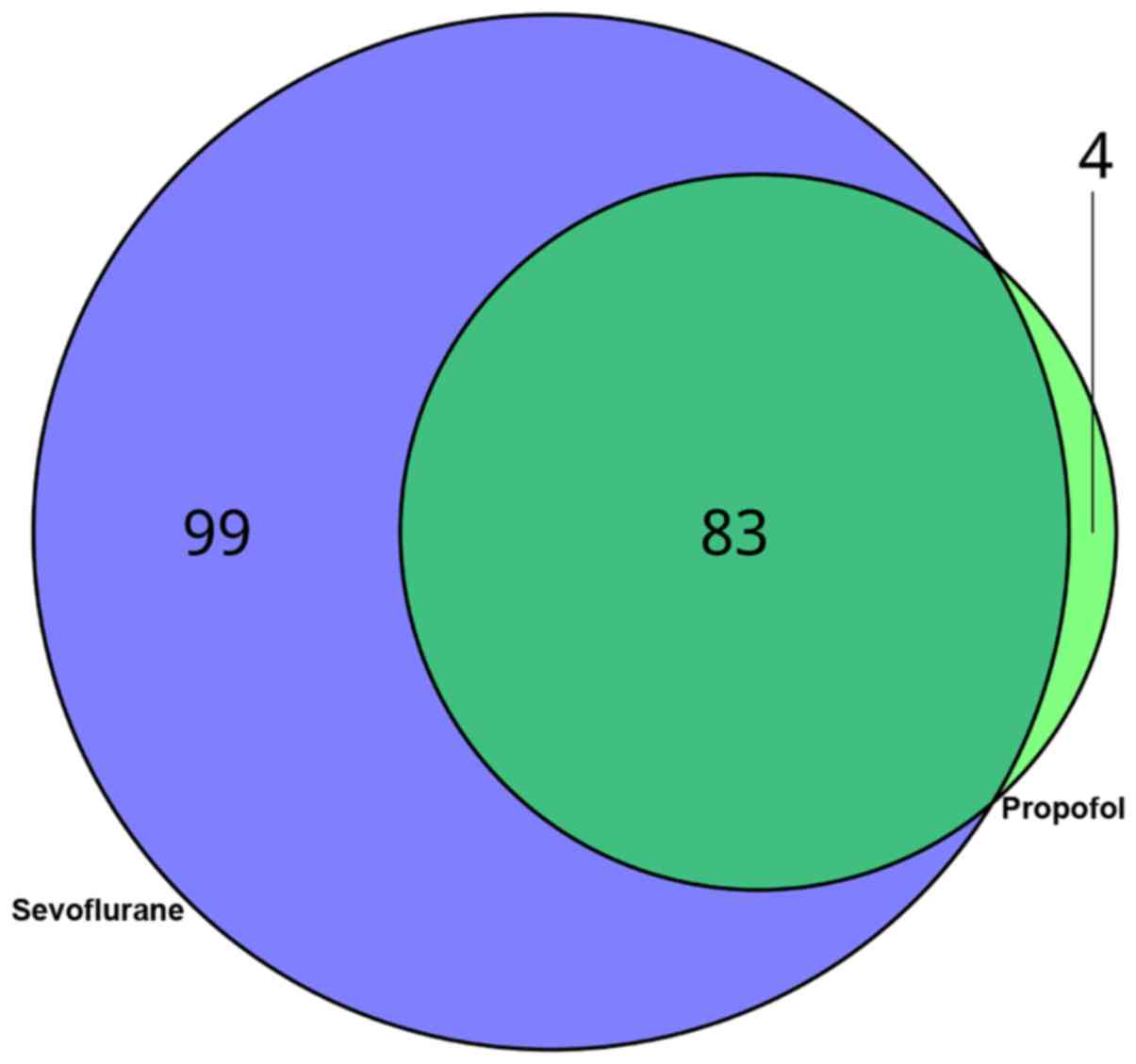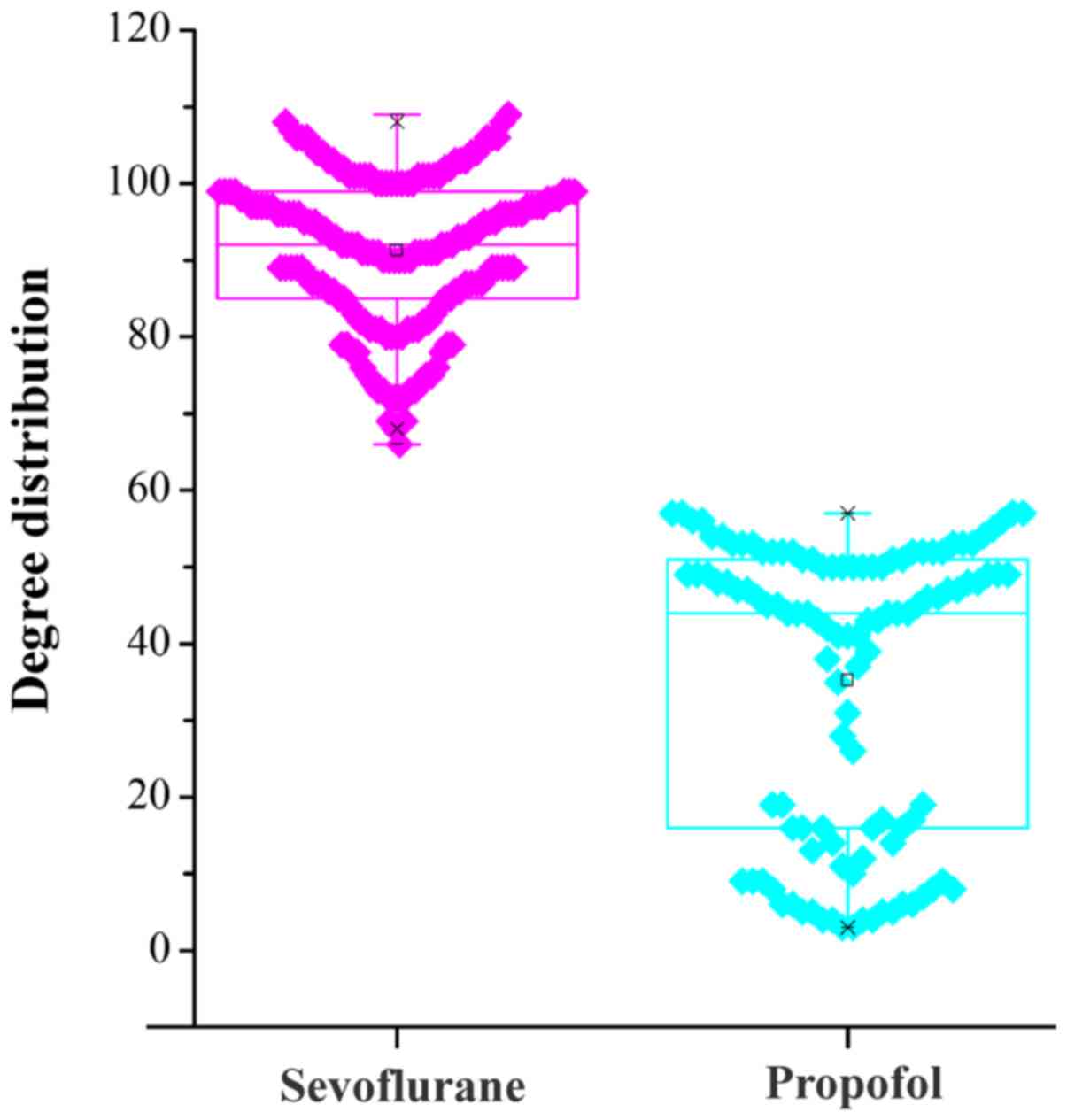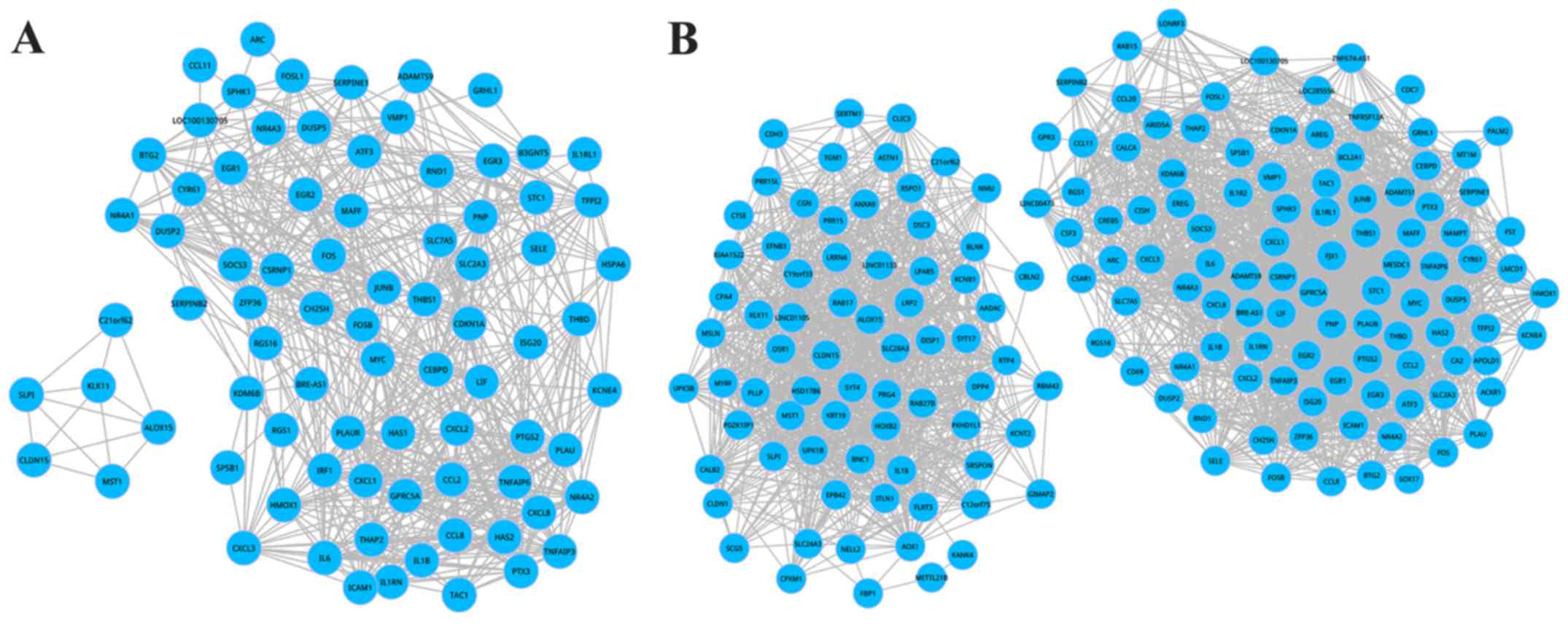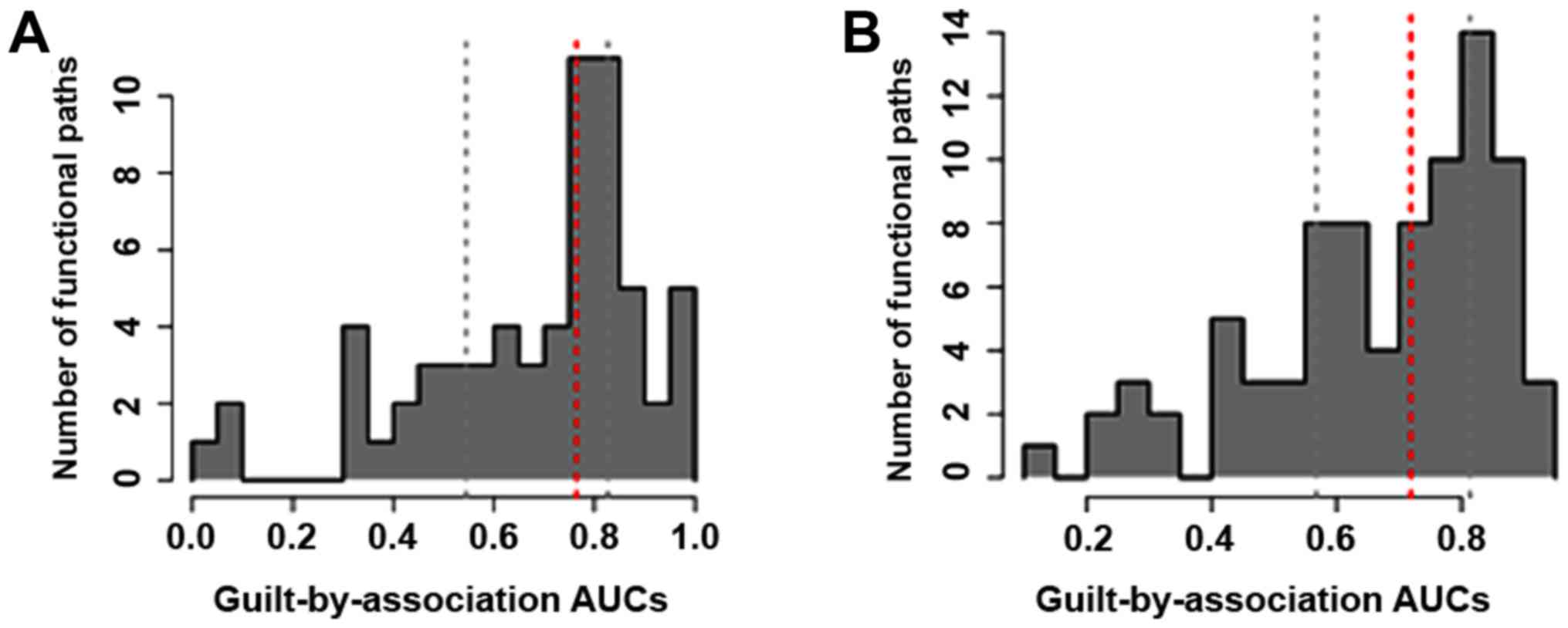|
1
|
Rezaianzadeh A, Maghsoudi B, Tabatabaee H,
Keshavarzi S, Bagheri Z, Sajedianfard J, Gerami H and Rasouli J:
Factors associated with extubation time in coronary artery bypass
grafting patients. PeerJ. 3:e14142015. View Article : Google Scholar : PubMed/NCBI
|
|
2
|
Selvanayagam JB, Petersen SE, Francis JM,
Robson MD, Kardos A, Neubauer S and Taggart DP: Effects of off-pump
versus on-pump coronary surgery on reversible and irreversible
myocardial injury: A randomized trial using cardiovascular magnetic
resonance imaging and biochemical markers. Circulation.
109:345–350. 2004. View Article : Google Scholar : PubMed/NCBI
|
|
3
|
Varadarajan SG, An J, Novalija E and Stowe
DF: Sevoflurane before or after ischemia improves contractile and
metabolic function while reducing myoplasmic Ca(2+) loading in
intact hearts. Anesthesiology. 96:125–133. 2002. View Article : Google Scholar : PubMed/NCBI
|
|
4
|
Frässdorf J, De Hert S and Schlack W:
Anaesthesia and myocardial ischaemia/reperfusion injury. Br J
Anaesth. 103:89–98. 2009. View Article : Google Scholar : PubMed/NCBI
|
|
5
|
Hellström J, Öwall A, Bergström J and
Sackey PV: Cardiac outcome after sevoflurane versus propofol
sedation following coronary bypass surgery: A pilot study. Acta
Anaesthesiol Scand. 55:460–467. 2011. View Article : Google Scholar : PubMed/NCBI
|
|
6
|
Wang J, Zheng H, Chen CL, Lu W and Zhang
YQ: Sevoflurane at 1 MAC provides optimal myocardial protection
during off-pump CABG. Scand Cardiovasc J. 47:175–184. 2013.
View Article : Google Scholar : PubMed/NCBI
|
|
7
|
Lin E and Symons JA: Volatile anaesthetic
myocardial protection: A review of the current literature. HSR Proc
Intensive Care Cardiovasc Anesth. 2:105–109. 2010.PubMed/NCBI
|
|
8
|
Li H, Cang J and Zhang X: Sevoflurane
exerts a more marked influence compared with propofol on gene
expression in patients undergoing coronary artery bypass graft
surgery. Exp Ther Med. 11:448–454. 2016. View Article : Google Scholar : PubMed/NCBI
|
|
9
|
Garcia C, Julier K, Bestmann L, Zollinger
A, von Segesser LK, Pasch T, Spahn DR and Zaugg M: Preconditioning
with sevoflurane decreases PECAM-1 expression and improves one-year
cardiovascular outcome in coronary artery bypass graft surgery. Br
J Anaesth. 94:159–165. 2005. View Article : Google Scholar : PubMed/NCBI
|
|
10
|
Yao YT and Li LH: Sevoflurane versus
propofol for myocardial protection in patients undergoing coronary
artery bypass grafting surgery: A meta-analysis of randomized
controlled trials. Chin Med Sci J. 24:133–141. 2009. View Article : Google Scholar : PubMed/NCBI
|
|
11
|
Jakobsen CJ, Berg H, Hindsholm KB, Faddy N
and Sloth E: The influence of propofol versus sevoflurane
anesthesia on outcome in 10,535 cardiac surgical procedures. J
Cardiothorac Vasc Anesth. 21:664–671. 2007. View Article : Google Scholar : PubMed/NCBI
|
|
12
|
Sayin MM, Özatamer O, Taşöz R, Kilinç K
and Ünal N: Propofol attenuates myocardial lipid peroxidation
during coronary artery bypass grafting surgery. Br J Anaesth.
89:242–246. 2002. View Article : Google Scholar : PubMed/NCBI
|
|
13
|
Corcoran TB, Engel A, Sakamoto H, O'Shea
A, O'Callaghan-Enright S and Shorten GD: The effects of propofol on
neutrophil function, lipid peroxidation and inflammatory response
during elective coronary artery bypass grafting in patients with
impaired ventricular function. Br J Anaesth. 97:825–831. 2006.
View Article : Google Scholar : PubMed/NCBI
|
|
14
|
Louwen F, Muschol-Steinmetz C, Reinhard J,
Reitter A and Yuan J: A lesson for cancer research: Placental
microarray gene analysis in preeclampsia. Oncotarget. 3:759–773.
2012. View Article : Google Scholar : PubMed/NCBI
|
|
15
|
Subramanian A, Tamayo P, Mootha VK,
Mukherjee S, Ebert BL, Gillette MA, Paulovich A, Pomeroy SL, Golub
TR, Lander ES, et al: Gene set enrichment analysis: a
knowledge-based approach for interpreting genome-wide expression
profiles. Proc Natl Acad Sci USA. 102:15545–15550. 2005. View Article : Google Scholar : PubMed/NCBI
|
|
16
|
Tilford CA and Siemers NO: Gene set
enrichment analysis. Methods Mol Biol. 563:99–121. 2009. View Article : Google Scholar : PubMed/NCBI
|
|
17
|
Curtis RK, Oresic M and Vidal-Puig A:
Pathways to the analysis of microarray data. Trends Biotechnol.
23:429–435. 2005. View Article : Google Scholar : PubMed/NCBI
|
|
18
|
Qin T: Inferring biological knowledge of
pathways from an ontology fingerprint-derived gene network. PhD
dissertation, Medical University of South Carolina. Publication no
AAI3569828 (Charleston, SC, USA). 2012.
|
|
19
|
Peña-Castillo L, Tasan M, Myers CL, Lee H,
Joshi T, Zhang C, Guan Y, Leone M, Pagnani A, Kim WK, et al: A
critical assessment of Mus musculus gene function prediction using
integrated genomic evidence. Genome Biol. 9 (Suppl 1):S22008.
View Article : Google Scholar
|
|
20
|
Mostafavi S, Ray D, Warde-Farley D,
Grouios C and Morris Q: GeneMANIA: A real-time multiple association
network integration algorithm for predicting gene function. Genome
Biol. 9 (Suppl 1):S42008. View Article : Google Scholar : PubMed/NCBI
|
|
21
|
Sharan R, Ulitsky I and Shamir R:
Network-based prediction of protein function. Mol Syst Biol. 3:88.
2007. View Article : Google Scholar : PubMed/NCBI
|
|
22
|
Zuberi K, Franz M, Rodriguez H, Montojo J,
Lopes CT, Bader GD and Morris Q: GeneMANIA prediction server 2013
update. Nucleic Acids Res. 41:W115–W122. 2013. View Article : Google Scholar : PubMed/NCBI
|
|
23
|
Lucchinetti E, Hofer C, Bestmann L,
Hersberger M, Feng J, Zhu M, Furrer L, Schaub MC, Tavakoli R,
Genoni M, et al: Gene regulatory control of myocardial energy
metabolism predicts postoperative cardiac function in patients
undergoing off-pump coronary artery bypass graft surgery:
Inhalational versus intravenous anesthetics. Anesthesiology.
106:444–457. 2007. View Article : Google Scholar : PubMed/NCBI
|
|
24
|
Irizarry RA, Hobbs B, Collin F,
Beazer-Barclay YD, Antonellis KJ, Scherf U and Speed TP:
Exploration, normalization, and summaries of high density
oligonucleotide array probe level data. Biostatistics. 4:249–264.
2003. View Article : Google Scholar : PubMed/NCBI
|
|
25
|
Bolstad BM, Irizarry RA, Åstrand M and
Speed TP: A comparison of normalization methods for high density
oligonucleotide array data based on variance and bias.
Bioinformatics. 19:185–193. 2003. View Article : Google Scholar : PubMed/NCBI
|
|
26
|
Pepper SD, Saunders EK, Edwards LE, Wilson
CL and Miller CJ: The utility of MAS5 expression summary and
detection call algorithms. BMC Bioinformatics. 8:2732007.
View Article : Google Scholar : PubMed/NCBI
|
|
27
|
Zhu LJ, Gazin C, Lawson ND, Pagès H, Lin
SM, Lapointe DS and Green MR: ChIPpeakAnno: A bioconductor package
to annotate ChIP-seq and ChIP-chip data. BMC Bioinformatics.
11:2372010. View Article : Google Scholar : PubMed/NCBI
|
|
28
|
Smyth GK: Limma: linear models for
microarray data. Bioinformatics and Computational Biology Solutions
Using R and Bioconductor. Gentleman R, Carey VJ, Huber W, Irizarry
RA and Dudoit S: Statistics for Biology and Health. (Springer, New
York, NY). 397–420. 2005. View Article : Google Scholar
|
|
29
|
Benjamini Y, Drai D, Elmer G, Kafkafi N
and Golani I: Controlling the false discovery rate in behavior
genetics research. Behav Brain Res. 125:279–284. 2001. View Article : Google Scholar : PubMed/NCBI
|
|
30
|
Gillis J and Pavlidis P: The role of
indirect connections in gene networks in predicting function.
Bioinformatics. 27:1860–1866. 2011. View Article : Google Scholar : PubMed/NCBI
|
|
31
|
Huang W, Sherman BT and Lempicki RA:
Systematic and integrative analysis of large gene lists using DAVID
bioinformatics resources. Nat Protoc. 4:44–57. 2009. View Article : Google Scholar : PubMed/NCBI
|
|
32
|
Ford G, Xu Z, Gates A, Jiang J and Ford
BD: Expression Analysis Systematic Explorer (EASE) analysis reveals
differential gene expression in permanent and transient focal
stroke rat models. Brain Res. 1071:226–236. 2006. View Article : Google Scholar : PubMed/NCBI
|
|
33
|
Neilsen PM, Cheney KM, Li CW, Chen JD,
Cawrse JE, Schulz RB, Powell JA, Kumar R and Callen DF:
Identification of ANKRD11 as a p53 coactivator. J Cell Sci.
121:3541–3552. 2008. View Article : Google Scholar : PubMed/NCBI
|
|
34
|
Ponomarev I, Wang S, Zhang L, Harris RA
and Mayfield RD: Gene coexpression networks in human brain identify
epigenetic modifications in alcohol dependence. J Neurosci.
32:1884–1897. 2012. View Article : Google Scholar : PubMed/NCBI
|
|
35
|
Doig TN, Hume DA, Theocharidis T, Goodlad
JR, Gregory CD and Freeman TC: Coexpression analysis of large
cancer datasets provides insight into the cellular phenotypes of
the tumour microenvironment. BMC Genomics. 14:4692013. View Article : Google Scholar : PubMed/NCBI
|
|
36
|
Chua HN, Sung WK and Wong L: Exploiting
indirect neighbours and topological weight to predict protein
function from protein-protein interactions. Bioinformatics.
22:1623–1630. 2006. View Article : Google Scholar : PubMed/NCBI
|
|
37
|
Yip AM and Horvath S: Gene network
interconnectedness and the generalized topological overlap measure.
BMC Bioinformatics. 8:222007. View Article : Google Scholar : PubMed/NCBI
|
|
38
|
Bowie AG and O'Neill LA: Vitamin C
inhibits NF-kappa B activation by TNF via the activation of p38
mitogen-activated protein kinase. J Immunol. 165:7180–7188. 2000.
View Article : Google Scholar : PubMed/NCBI
|
|
39
|
Zhong C, Zhou Y and Liu H: Nuclear factor
kappaB and anesthetic preconditioning during myocardial
ischemia-reperfusion. Anesthesiology. 100:540–546. 2004. View Article : Google Scholar : PubMed/NCBI
|
|
40
|
Konia MR, Schaefer S and Liu H: Nuclear
factor-[kappa]B inhibition provides additional protection against
ischaemia/reperfusion injury in delayed sevoflurane
preconditioning. Eur J Anaesthesiol. 26:496–503. 2009. View Article : Google Scholar : PubMed/NCBI
|
|
41
|
Tian Y, Guo S, Guo Y and Jian L:
Anesthetic propofol attenuates apoptosis, Aβ accumulation, and
inflammation induced by sevoflurane through NF-κB pathway in human
neuroglioma cells. Cell Mol Neurobiol. 35:891–898. 2015. View Article : Google Scholar : PubMed/NCBI
|
|
42
|
Chen G, Shaw MH, Kim YG and Nuñez G:
NOD-like receptors: Role in innate immunity and inflammatory
disease. Annu Rev Pathol. 4:365–398. 2009. View Article : Google Scholar : PubMed/NCBI
|
|
43
|
Kanneganti TD, Lamkanfi M and Núñez G:
Intracellular NOD-like receptors in host defense and disease.
Immunity. 27:549–559. 2007. View Article : Google Scholar : PubMed/NCBI
|
|
44
|
Levy JH and Tanaka KA: Inflammatory
response to cardiopulmonary bypass. Ann Thorac Surg. 75:S715–S720.
2003. View Article : Google Scholar : PubMed/NCBI
|
|
45
|
Ozaki K and Leonard WJ: Cytokine and
cytokine receptor pleiotropy and redundancy. J Biol Chem.
277:29355–29358. 2002. View Article : Google Scholar : PubMed/NCBI
|
|
46
|
Auer J, Weber T, Berent R, Lassnig E, Lamm
G and Eber B: Genetic polymorphisms in cytokine and adhesion
molecule genes in coronary artery disease. Am J Pharmacogenomics.
3:317–328. 2003. View Article : Google Scholar : PubMed/NCBI
|
|
47
|
Boekholdt SM, Peters RJ, Hack CE, Day NE,
Luben R, Bingham SA, Wareham NJ, Reitsma PH and Khaw KT: IL-8
plasma concentrations and the risk of future coronary artery
disease in apparently healthy men and women: The EPIC-Norfolk
prospective population study. Arterioscler Thromb Vasc Biol.
24:1503–1508. 2004. View Article : Google Scholar : PubMed/NCBI
|
|
48
|
Bu X, Wang B, Wang Y, Wang Z, Gong C, Qi F
and Zhang C: Pathway-related modules involved in the application of
sevoflurane or propofol in off-pump coronary artery bypass graft
surgery. Exp Ther Med. 14:97–106. 2017. View Article : Google Scholar : PubMed/NCBI
|


















